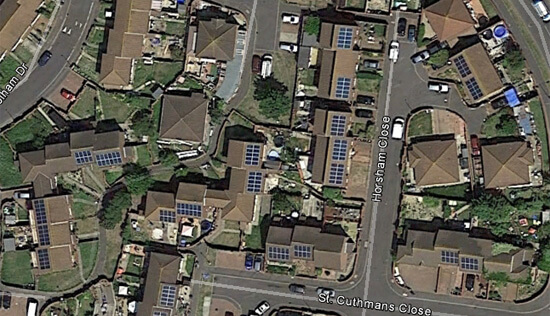
Farewell Feed-in Tariffs
April 1st 2019 saw the closure of the feed-in tariff scheme for the support of new solar installations. We look back at the successes and failures of the scheme, and cast our eyes towards a subsid-free solar future.
The story of feed-in tariffs
Launched in April 2010, feed-in tariffs have been responsible for massive uptake of solar in the UK. Since the launch of the scheme, more than 837,000 schemes have been registered, of which 750,000 have been on households. That’s a huge 6.1 GW of generation capacity that has been added; enough to power 2.3m homes.
We’ve certainly come a long way – back in 2008 there were just 50 installation companies like Joju Solar, installing a total of 430 installations per year in the UK. It’s an astonishing increase.
Feed-in tariffs were needed because back in 2010, solar PV wasn’t a cost-effective installation over its lifetime. A 4kW PV system would have cost £14,000 back then, but savings from the array would have left the customer £3000 short of getting their money back over 25 years. Not a great investment!
Why feed-in tariffs worked
To overcome the unfavourable economics, feed-in tariffs were introduced, and customers were paid a premium for the green electricity they generated. This increased income, and was designed to bring payback periods down to approximately 8-10 years. This incentive proved attractive, and so the solar market began to flourish.
It was attractive for many reasons, but the main reason was that it removed most of the risk from purchasing solar PV as a financial investment.
- The market was guaranteed – the electricity generated had to be accepted onto the grid
- The volume was guaranteed – there were no limits to what anyone could generate
- And the price was guaranteed – so give or take weather fluctuations you knew exactly what your income would be over the 25 year warrantied lifetime of the PV
It’s no surprise, therefore, that homeowners and institutional investors such as pension funds absolutely loved it.
What happened next
However, feed-in tariffs were soon overtaken by international market developments. The presence of solar incentives worldwide, saw booming demand and rapidly reducing prices. Mass production of modules, a dedicated solar silicon supply chain, and the rise of Chinese manufacturing have dropped panel prices from £3.00/W in 2010 to less than 30p/W today. Overall installation costs (including all components and labour) have dropped the price of a 4kW installation down to approximately £5,000.
Today, without any subsidy at all, a £5,000 PV array can generate a lifetime profit of £5,000. Governments worldwide (not just the UK) are looking at this and saying “Solar PV is profitable! Why should we be subsidising this anymore?”. It’s pretty hard to argue against this, from a taxpayer perspective.
What does the future look like?
So, what does a subsidy-free solar future look like? Pretty strong, we reckon, as there are still four very strong reasons for installing solar:
- Solar is profitable. Lifetime costs of generation from solar PV are approximately half that of purchasing electricity from the grid for both residential and commercial customers. People shop around different electricity tariffs to try and save 5% off their bills, but solar offers the possibility of saving 10 times that amount.
- Powering electric cars. We’re increasingly seeing that people want to generate their own electricity to power their electric cars. What could be more rewarding than knowing your transport is powered by 100% renewable electricity from your own roof? We believe the house of future will feature at least 2 green electricity technologies; a combination of solar PV, batteries and electric vehicles, and maybe the complete set.
- It’s just normal these days. Most people buying a new house, will renovate the kitchen, and then get rid of the previous owners dreadful taste in bathroom décor. It’s quite common now to see getting solar PV as 3rd on this list, alongside such things as getting a conservatory, upgrading the heating system or converting the loft space. 10 years ago, that wasn’t the case.
- It’s good for the environment! We’ve recently heard how we have 12 years to save the planet, and even the schoolchildren are on strike for a better future. Solar PV is a tangible way to make a huge difference to your own personal carbon footprint; a 3kW array would reduce your carbon footprint by a full 1 tonne CO2 per year.
Good News or Bad news?
Whilst it is easy to look on the removal of feed-in tariffs as ‘a bad thing’, the truth is we should see this a measure of how far the solar industry has come in the last 8 years. Solar has gone from being an uneconomic technology to being the cheapest way of supplying electricity to a building, due to the astonishingly rapid decrease in manufacturing and installation costs.
Of course many will only see newspaper headlines about feed-in tariffs, and think that ‘solar doesn’t work anymore’. So do share this blog piece and help us tell this good news story; it’s one of the most inspiring tech stories of our generation.



Sorry, the comment form is closed at this time.